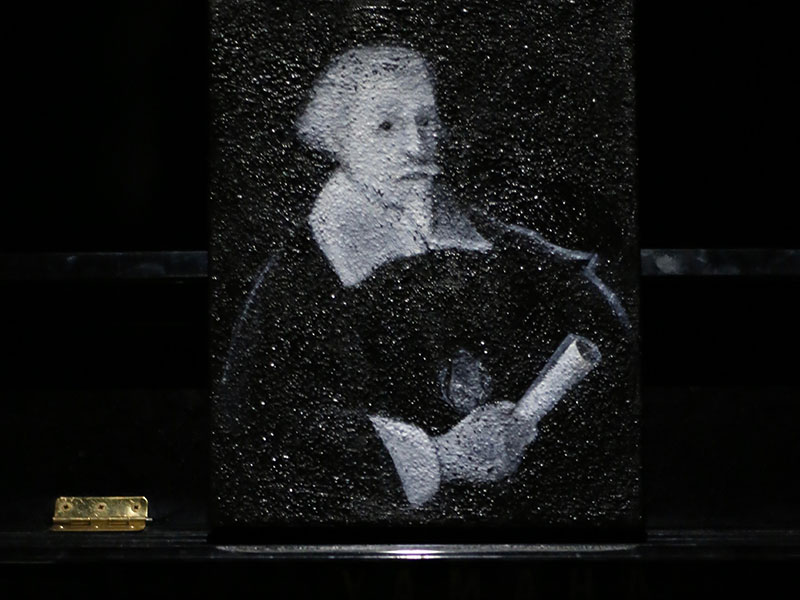last work//swan song (2019)
computer-driven piano, 4-channel audio, paintings
50 min
last work//swan song is an installation based on the music of German Baroque composer Heinrich Schütz. The use of the computer to reconfigure Baroque music was largely inspired by the arca musarithmica, a 17th-century combinatorial device which aided in the ‘automatic’ composition of church music. Such techniques prefigure more modern computing technology, and it is one the first examples of the use of a mechanical compositional method. Taking this idea as a point of departure and conceiving of the player-piano as a kind of ‘musarithmic arc’, the composer has taken the masterpiece of Heinrich Schütz, Opus ultimum, and created a series of re-interpretations using a variety of methods. The piano plays various spectral interpretations of the piece, a generative text based on the original work’s biblical text is read, and a variety of algorithmic processes are applied to the source material to create a diversity of acoustic environments. Additionally, painter Ellie Pyle has created a body of paintings after Schütz which imply movement through space via a minimal visual language. Her work explores the relationship of the wall to the canvas and draws upon a deeply personal vocabulary of materials to create an environment which evokes orbital paths and large celestial mechanisms redolent of Schütz’s work. The piece was born from a close correspondence between the collaborators, and the visual and acoustic environments, while using different languages, were designed as aesthetic complements to one another and offer a glimpse into the diversity of perceptions which can stem from a single point of origin.



